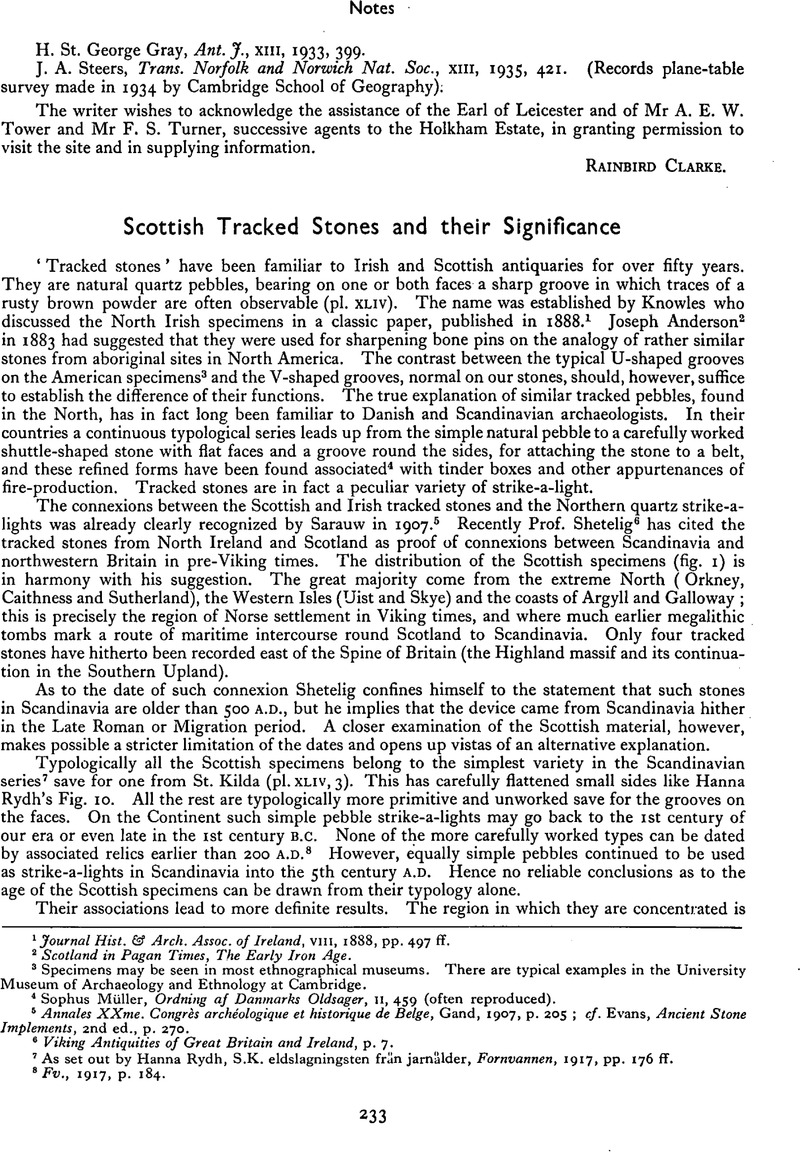No CrossRef data available.
Article contents
Scottish Tracked Stones and their Significance
Published online by Cambridge University Press: 28 May 2014
Abstract

- Type
- Other
- Information
- Copyright
- Copyright © The Prehistoric Society 1936
References
page 233 note 1 Journal Hist. & Arch. Assoc. of Ireland, VIII, 1888, pp. 497 ff.Google Scholar
paee 233 note 2 Scotland in Pagan Times, The Early Iron Age.
page 233 note 3 Specimens may be seen in most ethnographical museums. There are typical examples in the University Museum of Archaeology and Ethnology at Cambridge.
page 233 note 4 Müller, Sophus, Ordning af Danmarks Oldsager, II, 459 (often reproduced)Google Scholar.
page 233 note 5 Annales XXme. Congrès archéologique et historique de Beige, Gand, 1907, p. 205; cf. Evans, , Ancient Stone Implements, 2nd ed., p. 270 Google Scholar.
page 233 note 6 Viking Antiquities of Great Britain and Ireland, p. 7.
page 233 note 7 As set out by Hanna Rydh, S.K. eldslagningsten från jarnålder, Fornvannen, 1917, pp. 176 ff.Google Scholar
page 233 note 8 Fv., 1917, p. 184.
page 235 note 1 Childe, , Prehistory of Scotland, pp. 197, and 237 ff.Google Scholar
page 235 note 2 I am doubtful whether the three alleged brochs near Dundee deserve the name; no stairways are pre served, and they may be rather simple circular forts such as occur in the Tay valley and further west.
page 235 note 3 Proc. Soc. Ant. Scot., LXVI (1931–1932), p. 368 Google Scholar.
page 235 note 4 Fornvannen, 1917, p. 178 Google Scholar; Sitzungsberichte Prussia, XXIII (1905–1908), p. 19 Google Scholar; xxi, pp. 317, 402, 404, 407.
page 235 note 5 Altschlesien, vi (1936), p. 225 Google Scholar; Tackenberg, Die Vandalen in Niederschlesien, pl. XII, 11.
page 236 note 1 Arch. Aeliuna, 4, XIII, p. 305 Google Scholar.


